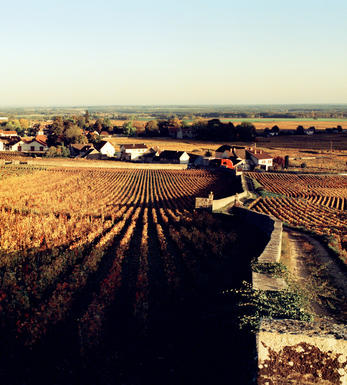
2017 Bonnes Mares, Grand Cru, Domaine Denis Mortet, Burgundy

About this WINE

Denis Mortet
Domaine Denis Mortet in Burgundy was founded by Denis Mortet in the early 1990s. He died at the age of 51, after taking his own life in January 2006. In his brief, but highly acclaimed passage from the winemaking scene, he rose to become a colossal figure in Burgundy, fashioning wines from relatively modest vineyard holdings which punch far above their weight. He rose to fame with an exceptional range of wines from the 1993 vintage.
He believed with a deep passion that the work in the vineyard was everything. But there was an essential contradiction to his work: he yearned to make wines of finesse and style, but everything he did in the vineyard and cellar tended towards sumptuous wines of almost unparalleled weight and opulence, which achieved cult status and a devoted following. But the harder he drove himself, the further from his stated aim he went. Only now, under son Arnaud and the watchful eye of his mother Laurence, are the wines achieving the minerality and elegance (and seemingly without sacrificing weight) that Denis sought.
At the domaine everything starts in the vineyard, where every measure is taken to produce the finest, ripest fruit possible, creating a style of wine which, as Denis used to say is "a pleasure to drink young or old." This is an estate of young vines - 25 years old - and where village wines are tended as if they were a Grand Cru; thus all the reds see 100% new oak. Denis Mortet's immaculate vineyards are the key and no stone is left unturned in the pursuit of excellence.
The number of cuvées of village Gevrey has fluctuated in recent years. It was reduced to just one in 2005, two in 2006 and then expanded again to four in 2007: Gevrey on its own, Combes Dessus, En Champs and vieilles vignes. Other cuvées which have appeared from time to time include En Motrot, En Derée and Au Vellé.
The Domaine's 10 hectares encompass 14 different Appellations, including two Grands Crus - Clos-de-Vougeot and Chambertin - and are a far cry from the days of his father, Charles, who started off with only one hectare.
Jasper Morris MW, Burgundy Wine Director and author of the award-winning Inside Burgundy comprehensive handbook.

Burgundy
Burgundy never quite achieved its political ambitions of being a kingdom in its own right, but for many, the region produces some of the most regal red and white wines in the world.
In Burgundy there are 100 different appellations, numerous individual vineyards and more than 3,000 individual producers. Around 15 million cases are produced annually from 26,500ha of vines in Burgundy, which is usually sub-divided into five regions: Chablis in the Yonne department; the Côte de Nuits and Côte de Beaune in the department of the Côte d'Or; and the Chalonnais and Mâconnais in the Saone-et-Loire.
The world's most famous white wine grape may have originated in Burgundy, where there’s a village called Chardonnay (near Mâcon). This marvellous, full-bodied grape responds well to barrel ageing and can produce wines of great complexity that can age for decades. More often than not though, in recent times, the wines are better enjoyed in their youth. The simpler white wines of Chablis to the north, and the Mâconnais in the south, are usually made in stainless steel to preserve freshness.
The heartland for white Burgundy is the Côte de Beaune with its three great villages, Meursault, Puligny-Montrachet and Chassagne-Montrachet. Here the vineyard classification system really comes into its own. On the flattest land, the wines will be classed only as generic Bourgogne Blanc; as the slope begins to rise, the wines are designated by the name of their village. At mid-slope, the finest vineyards (whose wines are bottled separately) are categorised as Premier Cru (eg Les Charmes) or Grand Cru (Le Montrachet).
Though attractive wines can be found in the Côte Chalonnais (Mercurey, Givry), the great red wines of Burgundy are found in the Côte d'Or. The line of magical villages which constitutes the Côte de Nuits, Gevrey-Chambertin, Morey-St Denis, Chambolle-Musigny, Vougeot, Vosne-Romanée and Nuits-St Georges is practically a roll call of great names. The Côte de Beaune competes through such gems as Volnay and Pommard, which are adjacent yet contrasting villages: lacy elegance for the wines of Volnay, while sturdy and more structured in those from Pommard.
Whereas Burgundy used to be considered a veritable minefield because of the complexity of choice, these days it is more of a playground for the adventurous wine lover, thanks to the vast increase in number of quality-conscious, properly-trained producers.

Pinot Noir
Pinot Noir is probably the most frustrating, and at times infuriating, wine grape in the world. However when it is successful, it can produce some of the most sublime wines known to man. This thin-skinned grape which grows in small, tight bunches performs well on well-drained, deepish limestone based subsoils as are found on Burgundy's Côte d'Or.
Pinot Noir is more susceptible than other varieties to over cropping - concentration and varietal character disappear rapidly if yields are excessive and yields as little as 25hl/ha are the norm for some climats of the Côte d`Or.
Because of the thinness of the skins, Pinot Noir wines are lighter in colour, body and tannins. However the best wines have grip, complexity and an intensity of fruit seldom found in wine from other grapes. Young Pinot Noir can smell almost sweet, redolent with freshly crushed raspberries, cherries and redcurrants. When mature, the best wines develop a sensuous, silky mouth feel with the fruit flavours deepening and gamey "sous-bois" nuances emerging.
The best examples are still found in Burgundy, although Pinot Noir`s key role in Champagne should not be forgotten. It is grown throughout the world with notable success in the Carneros and Russian River Valley districts of California, and the Martinborough and Central Otago regions of New Zealand.


Buying options
Add to wishlist
wine at a glance
Delivery and quality guarantee